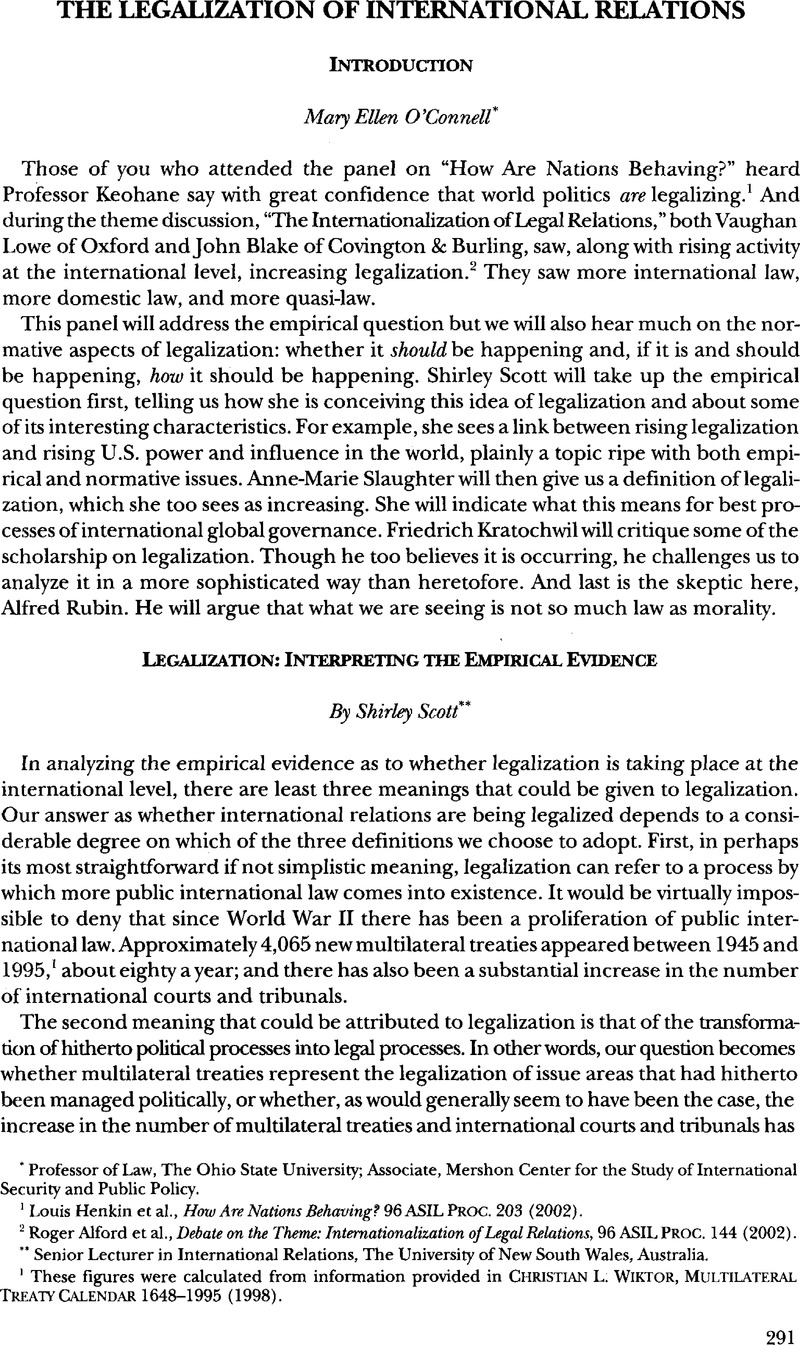Article contents
Legalization: Interpreting the Empirical Evidence
Published online by Cambridge University Press: 28 February 2017
Abstract

- Type
- The Legalization of International Relations
- Information
- Copyright
- Copyright © American Society of International Law 2002
References
1 These figures were calculated from information provided in Christian L. Wiktor, Multilateral Treaty Calendar 1648-1995 (1998).
2 See Scott, Shirley V., International Lawyers: Handmaidens, Chefs, or Birth Attendants? A Response to Philip Akton, 9 Eur. J. Int’l L. 750-56 (1998)CrossRefGoogle Scholar.
3 See, inter alia, Scott, Shirley V., International Law as Ideology: Theorising the Relationship between International Law and International Politics, 5 Eur. J. Int’l L. 313 1994)CrossRefGoogle Scholar; Scott, Shirley V., Universalism and Title to Territory in Antarctica, 66 Nordic J. Int’l L. 33 (1997)Google Scholar; Scott, Shirley V., Beyond “Compliance”: Reconceiving the International Law-Foreign Policy Dynamic, 19 Austrl. Y. B. Int’l L. 35 (1988)Google Scholar.
- 1
- Cited by




